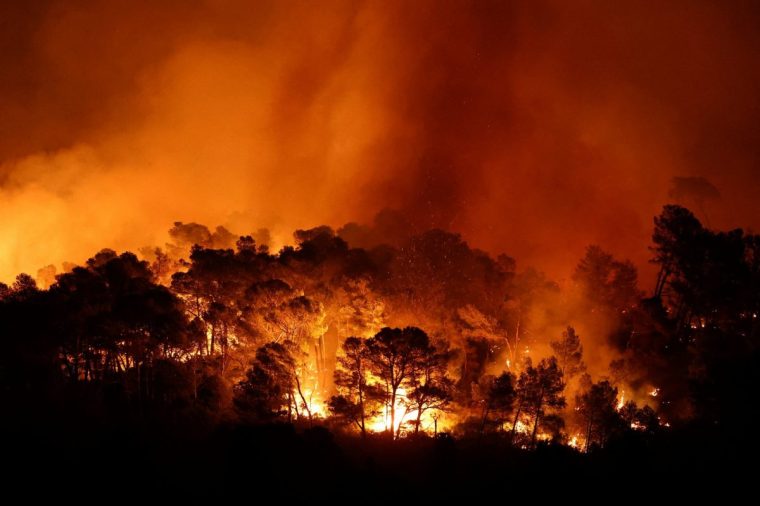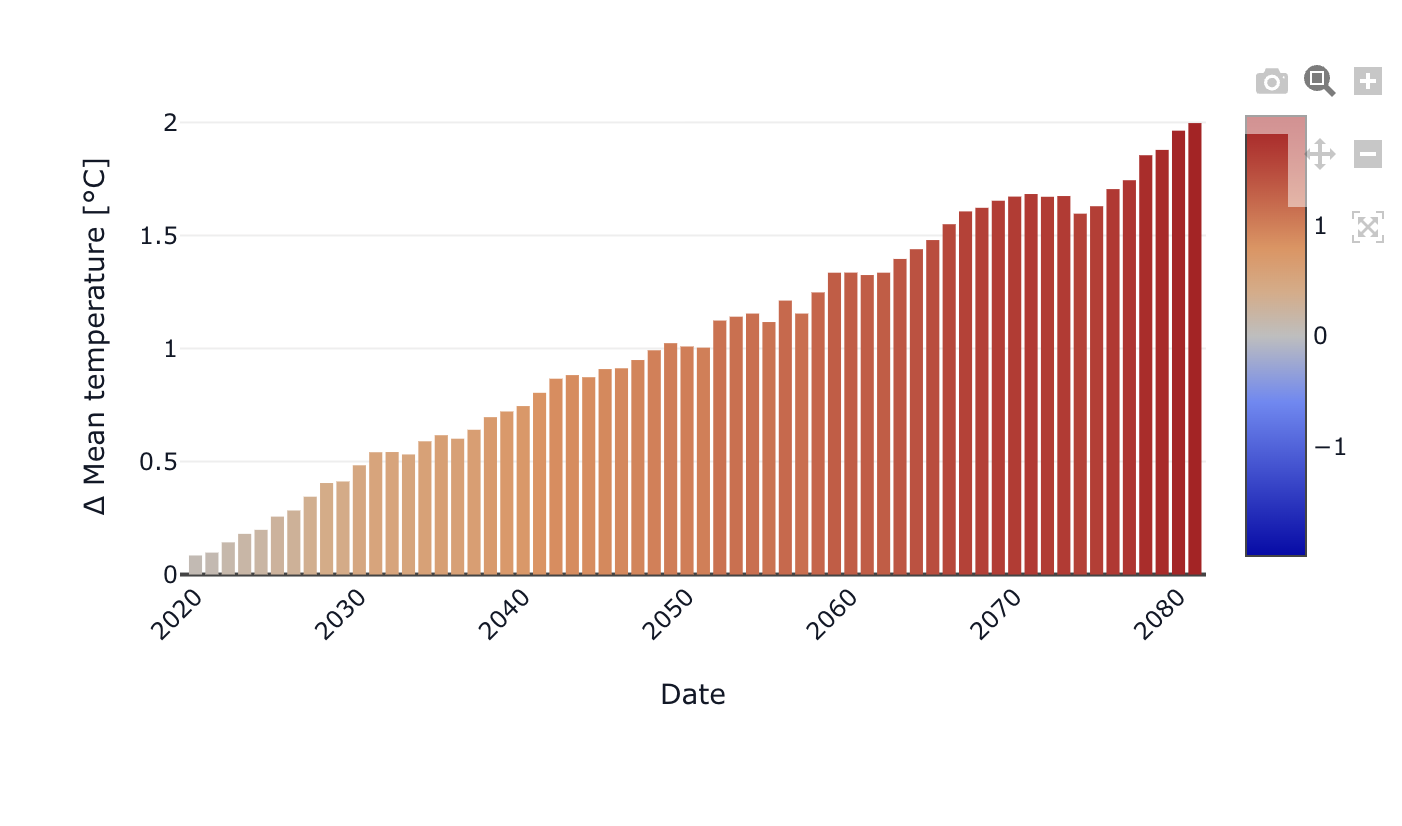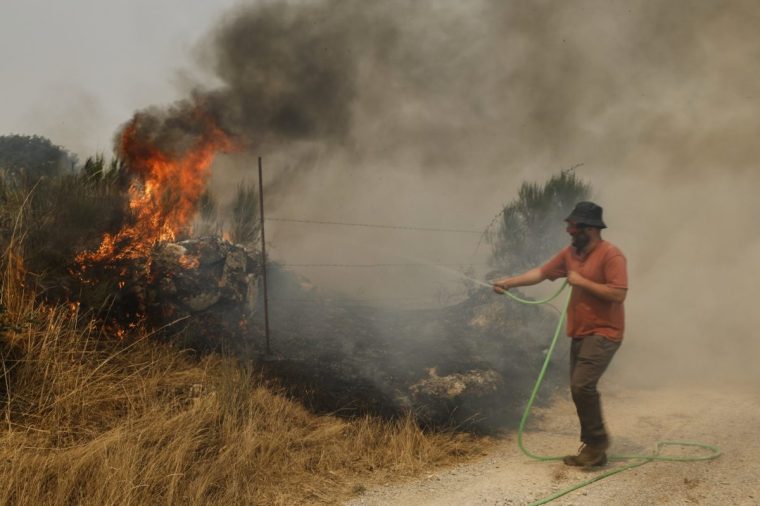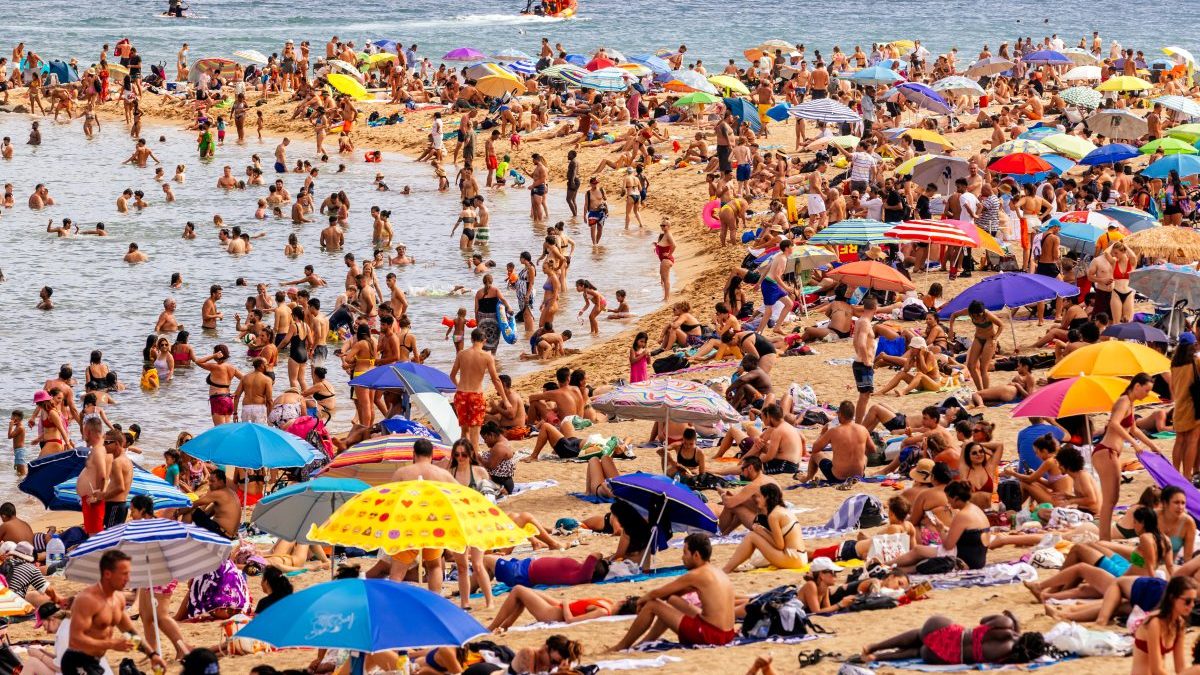As heatwaves force Britons to reconsider visiting Europe, is this the end for the traditional August summer holiday on the Med?
Rising numbers of Britons are forgoing traditional summer holidays in the Mediterranean because of surging temperatures and opting instead for cooler destinations or travelling off-season.
British holidaymakers are increasingly avoiding travelling to European holiday hotspots such as Spain and Greece in August as the continent enters an “uncharted territory of climate change” and heatwaves become more common, according to tourism and climate experts.
This summer, Europe has been hit by successive heatwaves, with temperatures often surpassing 40°C across the south of the continent.
New FeatureIn ShortQuick Stories. Same trusted journalism.
In Florence in northern Italy, where tourists are predicted to see the mercury rise to 40 °C, a four-year-old boy died of heatstroke. On Monday, half of France was placed under a heatwave warning, while Spain, which is grappling with two major wildfires, has been issued with weather alerts, warning of “extreme danger” in Zaragoza and the Basque Country in the north of the country.
In three to five years, we may see the end of the traditional August holiday, according to Manuel Alector Ribeiro, an associate professor in Tourism Management at Surrey University.
“There has been a change in British holidaymakers’ behaviour,” he said, “in terms of how they are booking holidays, especially to the Mediterranean, and that is related to the heatwaves.”
“The tourist seasons are extending,” Professor Ribeiro told The i Paper. “Seasons are increasing around May and June, and September and October to avoid extreme temperatures and big crowds. October is the new August.”
 Extreme weather events and wildfires across Europe (Photo: Omar Zaghloul/ Anadolu/Getty)
Extreme weather events and wildfires across Europe (Photo: Omar Zaghloul/ Anadolu/Getty)
More Britons are seemingly aware of this, with 76 per cent of UK adults believing one or more popular holiday destinations will be too hot to visit within the next five years, according to a survey released this summer by InsureandGo.
As a result, over a third of the survey’s respondents were looking to shift their main holiday dates by a month or two.
Europe is the fastest-warming continent, heating up at twice the global average, according to the EU’s Copernicus Programme. Some of the most popular European tourist destinations are expected to experience at least double the number of heatwaves by the early 2050s.
We are “entering an uncharted territory of climate change”, according to Dr Malcolm N Mistry, an assistant professor in climate modelling at the London School of Hygiene and Tropical Medicine.
 Trees burn during a wildfire near in Saint-Laurent-de-la-Cabrerisse, southern France this month (Photo: Abdul Saboor/Reuters)
Trees burn during a wildfire near in Saint-Laurent-de-la-Cabrerisse, southern France this month (Photo: Abdul Saboor/Reuters)
Data modelling from ClimateAi, a California-based company helping businesses minimise climate change-related risks, shared with The i Paper, shows that the rise in heatwaves will be particularly pronounced in Rome, Italy, where the mean temperature is due to rise by 1°C by 2050.
“Warming of just 1°C in the mean temperature can double or more the number of days exceeding [heatwave] thresholds,” Will Kletter, chief operating officer of ClimateAi, said.
In Barcelona, this rise in average temperature is expected by the end of the 2050s, in Athens, by 2053, and Lisbon will exceed the 1°C threshold by 2080.
“Absolutely, we will see temperatures continue to rise and experience more extreme weather events over 40°C,” said Mr Kletter.
In addition to travelling at other times of year, Britons are travelling to different destinations farther north.
 Yearly mean temperature difference in Rome compared to its current climate (Photo: ClimateAi)
Yearly mean temperature difference in Rome compared to its current climate (Photo: ClimateAi)
“People are looking for cooler places. Nordic destinations are gaining on this… and the expectation is this will increase over the coming years,” Professor Ribeiro said.
Last year, there was a 44 per cent increase in travel to cooler destinations such as Canada, Finland and Iceland, a 2024 poll by the luxury travel company Virtuoso showed.
And in countries already frequented by European tourists in the summer, alternative destinations are growing in popularity.
“In Spain, the northern coast of Spain is benefiting, places like Santander and Bilbao,” Professor Ribeiro said. “In France, this is happening in Brittany and Normandy. Tour agencies and airways are responding by expanding capacity.”
Avoiding peak summer months for heat in top holiday destinations will also be a great benefit to the host countries themselves, Professor Ribeiro said.
 Residents try to extinguish the forest fire in Pareisas, northwestern Spain on Wednesday (Photo: Lalo R Villar/AP)
Residents try to extinguish the forest fire in Pareisas, northwestern Spain on Wednesday (Photo: Lalo R Villar/AP)
“There are big stresses on resources in peak seasons; we see that with water scarcity in places like Spain, and water scarcity is also being impacted by climate change,” he said.
Professor Ribeiro explained how a more equal distribution of tourism between May and October was a “huge benefit” for businesses that currently had to deal with significant changes in tourism seasonality.
“For business, it is good they keep their businesses running for a longer period of time,” he said, adding: “More distribution [of tourism] with fewer peaks means they can keep their business open for the whole year and keep their staff working.”
However, there would inevitably still be British travellers who had to plan their holidays for July or August because of school holiday timetables.
“I think there needs to be a discussion [around school timetables],” Professor Ribeiro said.
“It is important for families and kids to disconnect and rest. If the seasons are changing, why not change the holiday season as well?”
Professor Mistry argued the main areas of adaptation would have to come from the tourist destinations themselves.
“If you are going to a place with 40°C heat, you want to feel safe,” he told The i Paper, “They will have to find a way to improve health infrastructure, make sure there are enough makeshift shelters and air conditioning – and they are already beginning to do that.”
To people who have an upcoming trip this August to southern Europe, Professor Mistry advised those with pre-existing health conditions, pregnant women, and elderly people to take particular care. “It is vulnerable people whose functionality capacity to release excess heat decreases.”
“Remain in shade, keep hydrated, take frequent breaks indoors, and take care your young ones are not outside, in peak heat hours for too long.”
